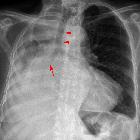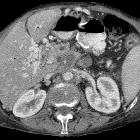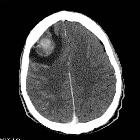ultrasound appearances of liver metastases

Ultrasound appearance of liver metastases can have bewildering variation, and the presence of hepatic steatosis can affect the sonographic appearance of liver lesions.
Radiographic features
Ultrasound
Patterns do exist between ultrasound appearance of the liver metastases and the likely primary, which is sometimes helpful in directing a search for an unknown primary, as well as helping distinguish between benign lesions and metastatic disease from a particular primary:
- hypoechoic: most common ~65%
- hyperechoic
- peripheral halo: a hypoechoic halo is a concerning feature, sometimes called the target or bull's eye lesion/sign
- common in many
- lung cancer
- calcified
- mucinous adenocarcinoma
- gastrointestinal
- ovarian mucinous adenocarcinoma
- mucinous adenocarcinoma
- cystic
- poorly defined (infiltrative)
- associated intrahepatic biliary dilation
Contrast-enhanced ultrasound
Contrast-enhanced ultrasound may be useful to increase the conspicuity of lesions and/or guide biopsy.
The 'hypovascular' and 'hypervascular' terminology refers to metastatic appearance on contrast enhanced cross sectional studies as peek arterial enhancement is not necessarily seen on arterial phase. The viable metastases of the liver show at least early peripheral enhancement on contrast-enhanced ultrasound even if the central aspect would remain unenhanced (necrotic). The extension of the central necrotic area often correlates the tumor size, hence small gastrointestinal metastases may enhance avidly and homogeneously in arterial phase.
- arterial phase: variable depending on primary
- hypovascular: gastrointestinal, ovarian, pancreatic adenocarcinoma
- hypervascular: neuroendocrine, melanoma, renal
- portal venous and late phase
- "wash out" (decreased echogenicity relative to background liver due to the lack of enhancement); may be the most useful phase for detection as all of the liver metastases show this phenomenon
Siehe auch:

 Assoziationen und Differentialdiagnosen zu ultrasound appearances of liver metastases:
Assoziationen und Differentialdiagnosen zu ultrasound appearances of liver metastases:










